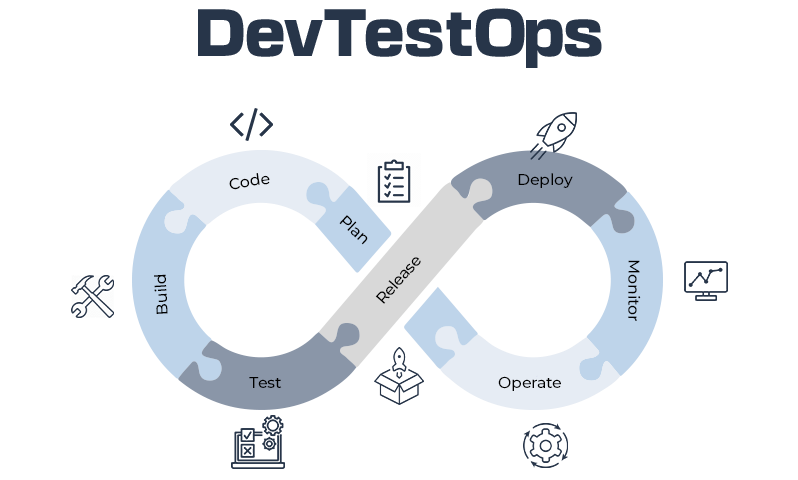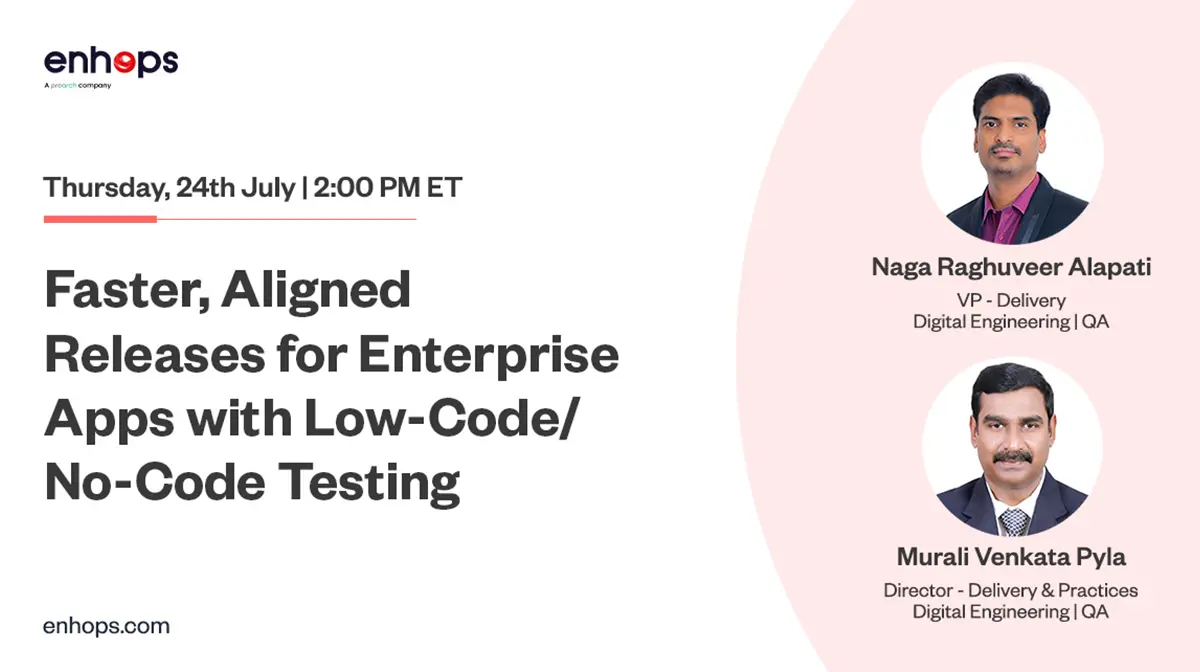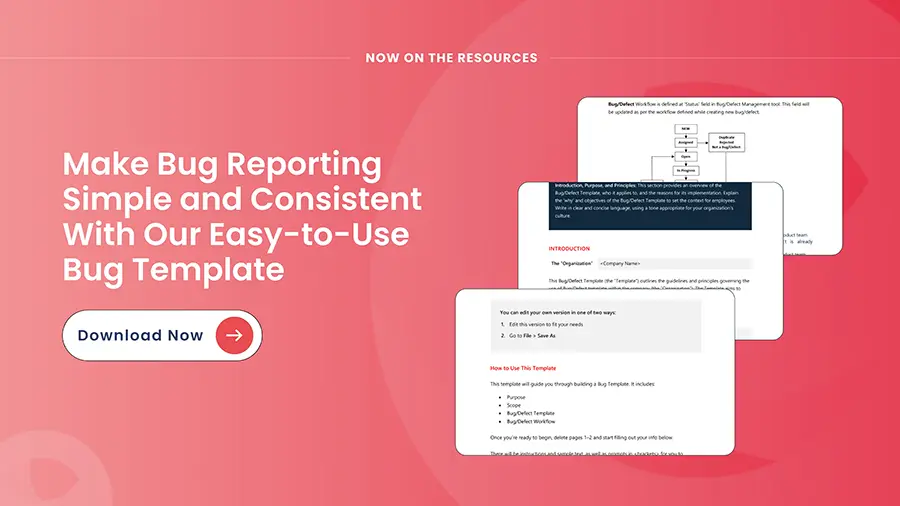DevOps has become the holy grail of agile software development. Several teams have achieved the primary goal of agile, namely quick and frequent releases, by leading operations-related tasks. But in reality, agile is much more than just quick and frequent releases.
Research shows that attention as agile takes up the hero role, the quality of releases often takes a back seat. The reason is natural – Software Development quickens by implementing automation across the lifecycle but testing always runs behind. This article focuses on DevTestOps – a term that embeds Test in between Dev and Ops and brings back Quality and Testing in focus.
In this article, I would like to share what I think about how DevTestOps work and how there is a constant loop of quality feedback.
What is DevTestOps?
DevTestOps is a well-laid-out framework that combines and integrates continuous testing within the software development. Like the Agile manifesto, DevTestOps has its own manifesto built in 2018. The DevTestOps manifesto targets not just to de-silo “Test” from “DevOps” but to raise the visibility of testers as an integral part of the DevOps and putting focus on the quality culture. The name suggests DevTestOps as a combination of DevOps and continuous testing.
While it involves early testing with increased frequency and throughout the delivery pipeline, we get DevTestOps. As part of this framework, the continuous testing framework is integrated with the CI/CD pipeline, emphasizing a tester’s critical role in development and operations. It promotes a continuous feedback loop between developers and testers throughout the product development process, aligned with DevOps.
It reduces business risk possibility of uncovering defects at earlier stages as prescribed by agile, where all members of a cross-functional team are equally responsible for the quality of a product and successful implementation.
DevTestOps promotes involvement of whole team in a testing project. It opens the gates for quality assurance across different stages of development and even beyond them, involving business users.

How do we sync up testing and dev in agile environments?
Agile software development facilitates flexibility, speed, and efficiency by establishing a collaborative approach. In the Agile approach, solutions are developed through cross-functional and collaborative teamwork.
During challenging times, new-age organizations expect faster turnaround due to changing needs and quicker application development cycles. Quality Assurance (QA) is essential to ensure the quality of work done in shorter, faster development cycles.
The roles of testers and developers are interchangeable in Agile development. Hence, a clear understanding of the work scope is required by both the development and testing teams.
A quality assurance team assists developers by proactively figuring out potential application bugs and issues. Moreover, it helps in resolving security, performance, or functionality issues. Additionally, this reduces the number of testing efforts required once the application reaches the user’s hands, which ensures the stability of the application. Thus, developers can move forward without dealing with pending issues or rework.
A common trend among business enterprises worldwide is increasing client expectations, technological upgrades, and unpredictability. Many enterprises are following Agile software development processes due to the magnitude of these changes and their accompanying uncertainties.
DevTestOps: How does it differ from DevOps?
DevOps facilitates faster and more highly reliable software development by automating most of the software development life cycle manual processes. The probability of ignoring critical bugs, scenarios, and business requirements is high as continuous testing is not looped in.
DevOps brings in development, delivery, and deployment as a continuous process, while DevTestOps integrates testing into that. While DevOps focuses on automating the continuous software delivery process, DevTestOps brings to the table an uninterrupted execution of automated tests as a part of the delivery process.
Prior to moving on to the next phase of the SDLC, immediate feedback can be incorporated and risks can be mitigated. DevOps and continuous development go hand in hand with this end-to-end testing automation, providing quality assurance as part of DevOps and aiding in maintaining continuity.
The scope of continuous testing does not restrict to functional and system testing, but as an addition, also facilitates end-to-end validation. It includes unit testing, API testing, integration testing, and system testing, spanning across functional and non-functional requirements these are all performed under a simulated environment with automation.,
So, this is the value DevTestOps brings to the strategy, and automated testing becomes integral to DevOps across each stage of SDLC.
This brings us to the next question.
What is the need to use DevTestOps?
Continuous integration, continuous delivery, and continuous deployment enable DevOps. In order to implement DevTestOps, you will need to integrate continuous testing with your existing CI/CD setup. This is how DevTestOps is implemented in any framework.
- Testers begin to play an increasingly crucial role throughout the development, delivery, and deployment process by providing immediate feedback. Defects are detected early by performing testing at each stage and automating most of the redundant manual processes. Debugging & fixing becomes easier, resulting in a decline in the count of reduction of test fix retest cycles.
- While incorporating testing saves time on the cycle, it is also important in automating processes and integrations with CI/CD pipelines. Regression cycles are shortened effectively and significantly as a result of it. Automation integrated with CI/CD allows regression of larger applications to be performed in mere minutes rather than weeks.
- A collaborative environment between developers and testers is essential for sustaining an ecosystem, resulting in a better understanding of product requirements between team members, and eventually a higher quality product.
- Compared to conventional software development and delivery cycles, the DevTestOps cycle significantly adds to testers’ morale. As a result, they have equal access to the product and are able to participate in equal ownership.
DevTestOps keeps automated testing in sync with build and deployment automation while preventing human errors and requiring fewer resources. Testing is a key component of DevOps’ success. End-to-end delivery cycles is proven to become much more efficient, when they are integrated.
DevTestOps: Pros and Cons
Advantages
- Tests and deployment are mostly automated, thereby less manpower is required.
- CI/CD pipelines are automated, so they save time.
- Testing and deployment in done in one click.
- Deployment errors are significantly reduced.
- Easy debugging of errors.
Disadvantages
- Software development expertise will be required to outsource infrastructure.
- Compatibility issues can arise when manufacturing environments are made the same as production environments.
- DevTestOps does not include security as a component.
How Continuous Testing Enables DevTestOps
DevOps is enabled when continuous integration is combined with Continuous Delivery and Continuous Deployment. However, to enable DevTestOps, testers must integrate continuous testing into CI/CD and continuous integration.
Testing is a vital part of the development process when we speak of DevTestOps. Be it deliveries or deployment. Every step of the testing process can be enhanced with continuous feedback. Additionally, every stage of software development is automated, enabling the following improvements:
- Defects and errors can be easily fixed if they are detected early. It results in a more efficient and timely delivery process.
- As a result of DevTestOps, regression cycles are reduced from weeks to hours, allowing quality to be improved with automation.
- Developing and testing together leads to a better understanding of the project modules, ultimately leading to a higher quality product.
- By leveraging DevTestOps and automation, testers can work on a wide range of testing and contribute to every phase of product development.
- Testers play an equal role in the development process, allowing tester ownership to be equal with developer ownership.
- Lastly building and deploying with automation reduces overall dependency and resists human error, thereby speeding up the process.
Tools that can support DevTestOps Implementation
Below are a few tools that can be considered:
Test Automation Tools: Provide testers with the ability to create and execute automated test cases. A few examples are Selenium, Appium, and Katalon Studio
Version Control Tool: This tool tracks changes made to the codebase. A good example is GitHub.
Automated Code Deployment Tool: Allows deployment of codes automatically without manual intervention. Example: Jenkins
Configuration management Tool: Several kinds of services and applications can be configured, managed, and deployed using the configuration management tool. Consistency is ensured in the use of the application and computer system. Example: Chef, puppet
Ticketing Tool: We can raise issues via the Ticketing System tool, and then track the status of those issues. Example: ALM, Jira
Provisioning and Monitoring Tool: This tool maintains systems clustered worldwide in large quantities. This tool maintains a homogeneous software and hardware infrastructure. Example: Vagrant
Best Practices For DevTestOps in a nutshell:
- A delivery pipeline can be improved by choosing the appropriate tools and frameworks at each phase.
- Getting the feedback faster and saving time are two high-value key factors and practices, that will help with the successful implementation. Teams can automate build deployments and include automated rollback mechanisms if a problem occurs.
- A continuous monitoring of the development, testing, and deployment pipeline can also help in the implementation of DevTestOps effectively. Monitoring the pipeline is crucial to overshadowing errors as quickly as possible.
- An effective DevTestOps structure requires full awareness of the testing team. Setting up the pipeline requires time, effort, and cost at the beginning. Once it is done, there is no turning back.
Final Thought
We at Enhops have been practicing DevOps for many years and created a very successful team of DevOps practitioners, engineers, and architects. As a services business, we do offer to bring our DevOps practice experience to the table and collaborate with our customers for their success, alongside we have also successfully delivered end-to-end test automation solutions.
We are helping our customers to maximize ROI by integrating DevOps and continuous testing into a practical implementation to deliver agile transformation. We as an organization, have vital centers of excellence focused on DevOps and quality assurance working together in collaboration.
Want to know more? Reach Us at info@enhops.com




